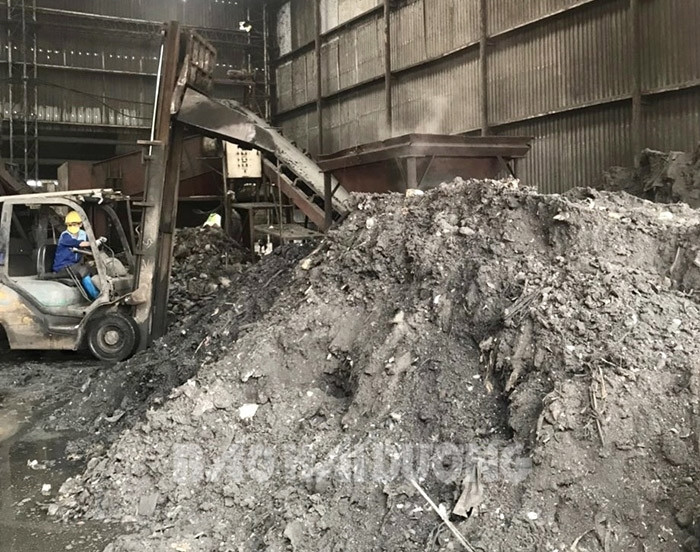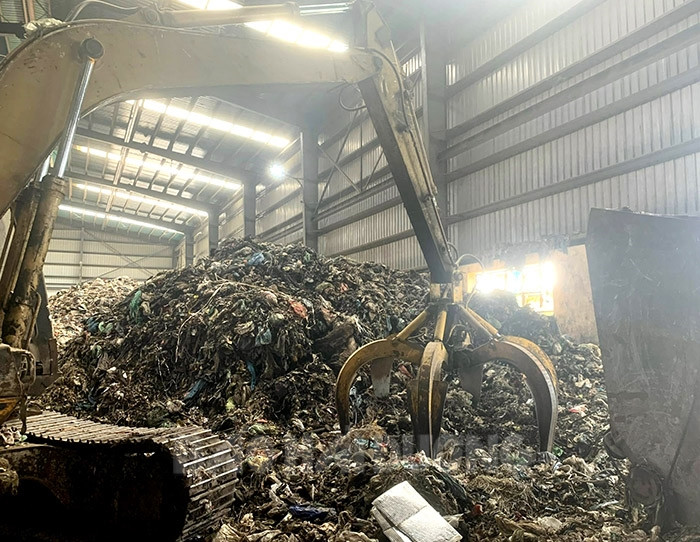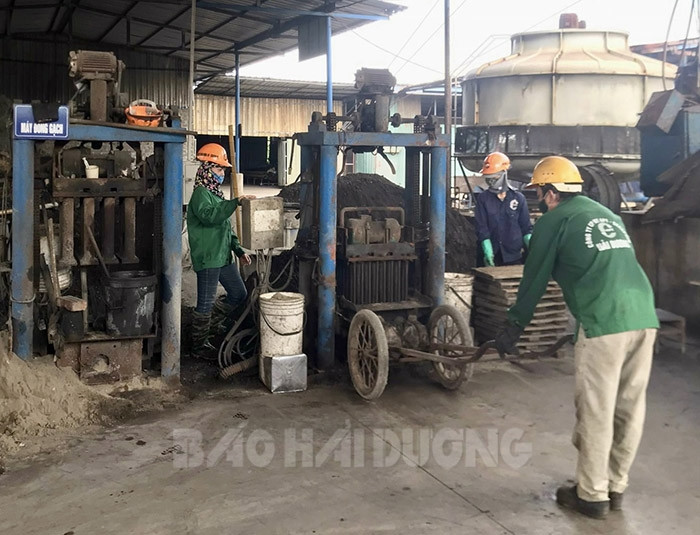Waste collection and treatment enterprises in Hai Duong are facing many difficulties in handling the amount of ash and slag generated after the process of burning household waste.

Minh Phuc Green Environment Joint Stock Company encounters many difficulties in handling ash and slag after burning waste.
Burning household waste at waste treatment plants has contributed to reducing the amount of solid waste generated in Hai Duong. However, the treatment of ash and slag after burning waste is facing many difficulties.
Generates large amounts of ash and slag
Hai Duong Urban Works Management Joint Stock Company is operating the Viet Hong Commune Waste Treatment Plant (Thanh Ha). This plant is operating 2 solid waste incinerators with a capacity of 240 tons/day. Mr. Nguyen Duc Sau, Director of the company, said that the waste incineration process generates a relatively large amount of ash and slag, equal to 8-10% of the waste volume fed into the incinerator. Over time, the amount of ash and slag increases while the land fund is limited. The company has found its own solutions to handle this amount of ash and slag, such as producing bricks for internal construction, but it can only use a part of it, while this type of brick has not been licensed for use in construction activities, so it cannot be consumed.
"The enterprise hopes that the authorities will consider and provide guidance on appropriate solutions for the amount of ash and slag after the waste incineration process, prioritizing the use of this ash and slag as filling materials and restoring areas after mineral exploitation," said Mr. Sau.
Similarly, the amount of ash and slag generated after the incineration of domestic waste at APT-Seraphin Hai Duong Environmental Joint Stock Company is also about 5 - 6.5 tons/day. This amount of ash and slag is processed by the company using the solidification method to produce unburnt bricks with a quantity of about 1,500 bricks/day and used for the construction of internal works (factory walls, sidewalks, drainage systems...) but currently there are still more than 31,000 bricks remaining.

The treatment of domestic waste by burning generates a lot of ash and slag. Currently, the amount of ash and slag remaining at the waste treatment plant of Hai Duong Urban Works Management Joint Stock Company is very large.
Lack of legal corridor
Mr. Bui Quang Bong, Director of APT-Seraphin Hai Duong Environmental Joint Stock Company, said that although the company has taken measures to treat the amount of ash and slag by making unburnt bricks, the production of solidified bricks is currently facing many difficulties. The costs are high due to the increase in labor, electricity, water, and mixing materials. The number of bricks produced is increasing but they are not allowed to be sold on the market, leading to backlog and unsaleability. If bricks are not produced, the amount of ash and slag generated is not enough to be used as construction materials or landfill. This causes many difficulties for the company.
According to the approved environmental impact assessment report, Minh Phuc Green Environment Joint Stock Company (Binh Giang) has two options for handling ash and slag after burning waste. Specifically, solidifying to produce unburnt bricks (block bricks) for internal use (if commercializing the product, it must meet standards and regulations) or transferring it to a competent unit for handling. The company encountered many difficulties in implementing both options. The company representative said that the demand for bricks in internal construction of the company was not much and had been met. The construction of a standard and regulation profile to announce the quality of the product for commercialization was also stuck. The reason is that ash and slag have many components, including ash and slag from industrial waste and ordinary waste, and their composition often changes depending on the nature of the input waste. Currently, the company is hiring Vicem But Son Cement Joint Stock Company in Ha Nam province to handle ash and slag after burning waste, but this option is costly. Businesses are having to use funds from other business activities to cover the cost of treating household waste.
Currently, domestic waste treatment enterprises in the province all want to meet standards and regulations for ash and slag to be qualified as construction filling materials to reduce the burden of treatment costs for the unit.

Solidification of ash and slag after incineration to produce unburnt bricks has been applied by waste treatment enterprises, but the products produced cannot be consumed.
According to the Department of Construction, there have been many studies on the use of ash and slag from thermal power plants, but studies on ash and slag from waste incinerators are a new issue. Currently, there is only one topic "Research on bottom ash from domestic waste incinerators as construction materials" proposed by the University of Transport and Communications and approved for implementation, but it is still at the level of a research topic. The Ministry of Construction has not yet issued standards, regulations, and guidelines for the use of ash and slag from waste plants, so treatment is still difficult.
Treating household waste by burning is inevitable, bringing many benefits in the current waste treatment process. However, the waste burning process will produce a large amount of ash and slag. Currently, some countries such as Germany, Denmark, Sweden ... have researched the use of ash and slag from waste incineration plants as road construction materials and filling materials to replace the increasingly depleted natural material sources.
From the current reality, the functional sectors of the province need to consider and conduct systematic scientific research on solutions for treating ash and slag generated from the waste incineration process to create a new source of materials for the construction industry, contributing to reducing environmental pollution and removing difficulties for waste treatment enterprises.
PHAN ANH